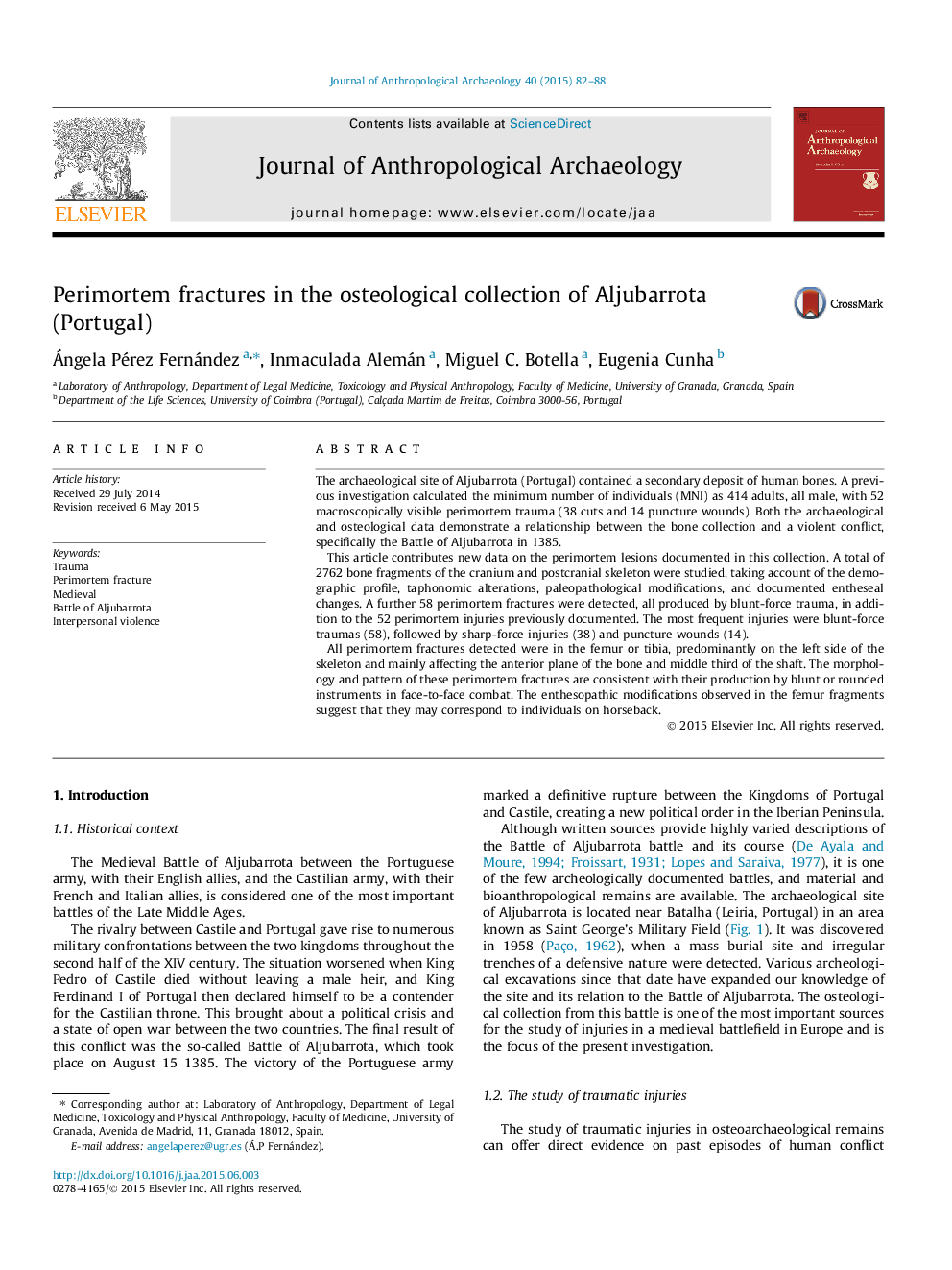| Article ID | Journal | Published Year | Pages | File Type |
|---|---|---|---|---|
| 7440500 | Journal of Anthropological Archaeology | 2015 | 7 Pages |
Abstract
All perimortem fractures detected were in the femur or tibia, predominantly on the left side of the skeleton and mainly affecting the anterior plane of the bone and middle third of the shaft. The morphology and pattern of these perimortem fractures are consistent with their production by blunt or rounded instruments in face-to-face combat. The enthesopathic modifications observed in the femur fragments suggest that they may correspond to individuals on horseback.
Keywords
Related Topics
Social Sciences and Humanities
Arts and Humanities
History
Authors
Ángela Pérez Fernández, Inmaculada Alemán, Miguel C. Botella, Eugenia Cunha,
